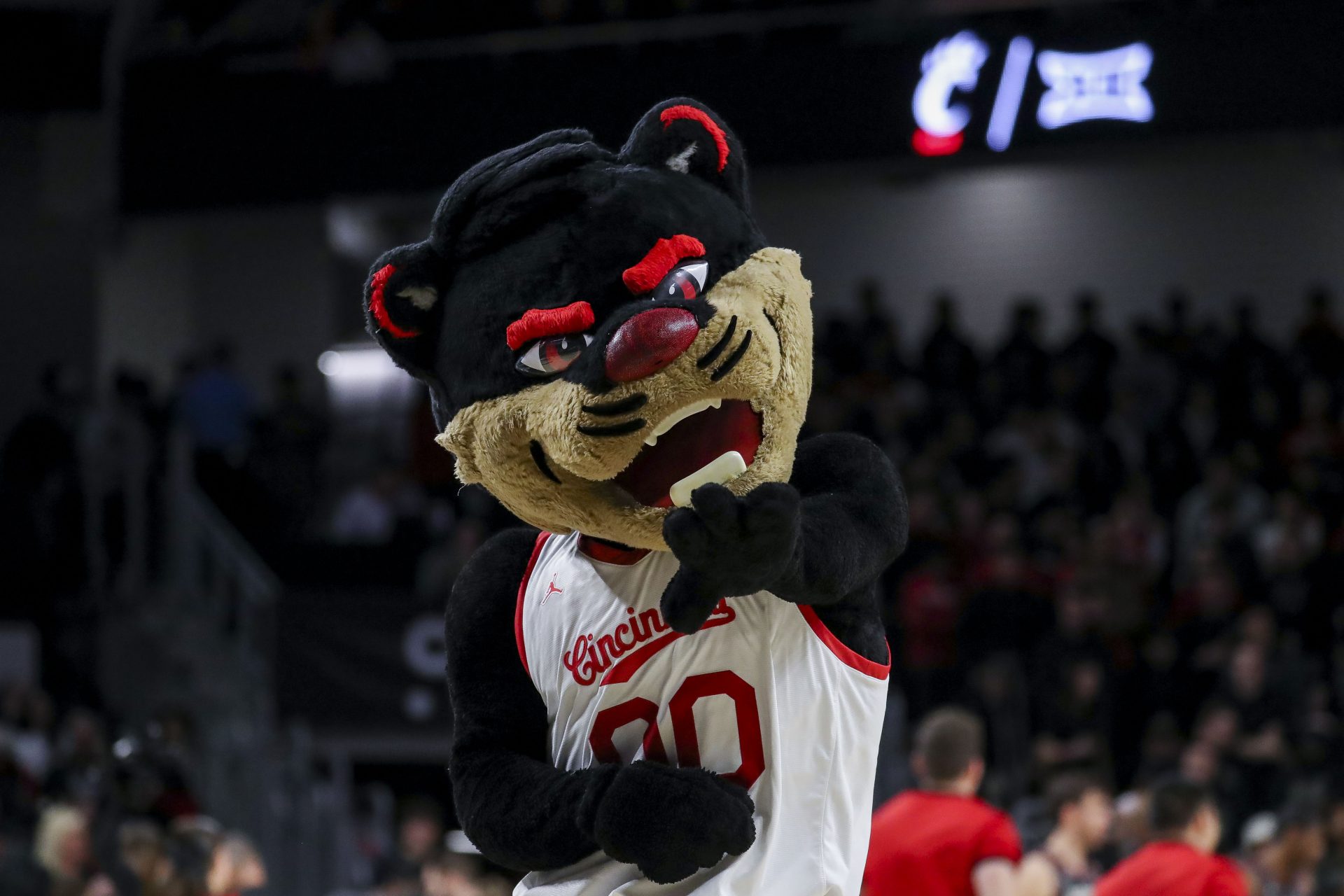College football is unique for several reasons, chief among them is the pageantry and pride shown for programs by alumni and fans alike. No amount of pageantry would be complete without the role of mascots.
There are over 134 different teams in the FBS, with as many varied and different backgrounds as there are teams. Uniquely, Cincinnati is the only school represented by the Bearcat at the Division I level, not including the Sam Houston State Bearkats. How did the mascot come to be, and in what ways does the history help tell the story that the Bearcat now represents? Let’s take a look at the history.

Who (or What) Is the Cincinnati Bearcats’ Mascot?
It is rare that we have to answer the actual question of what is a mascot, but in the case of the bearcat, there is context to be provided. Scientifically known as the binturong, a bearcat is a part of the Viverridae family which is a small to medium-sized group of mammals. It is long and heavy with short, stout legs and a thick coat of coarse hair.
Bearcats are typically found in tall forests or Nippert Stadium, depending on which part of the world you are in. It is neither bear nor cat, and the original meaning of the name has been lost as the local language that named the animal is now extinct.
The history of the University of Cincinnati is easier to recall. The school was founded in 1819 as Cincinnati College and is the second oldest higher education institution in the area, in addition to being the second largest. It became the University of Cincinnati after an estate allocation from a generous benefactor by the name of Charles McMicken and in 1870 was formally renamed.
The Bearcat moniker came much later. According to university archives, the name was “born” on Oct. 31, 1914, during a football game against the University of Kentucky Wildcats. During the second half, a cheerleader inspired by the effort of fullback Leonard K. “Teddy” Baehr began cheering “They may be Wildcats, but we have a Baehr-cat on our side” to which the crowd responded, “Come on, Baehr-cat!”
Following the game, cartoonist Paddy Reece drew a scene of a defeated Wildcat being chased by a creature labeled as a Bear Cat. At the time, there was no real knowledge of the actual existence of a bearcat, it was simply a play on words due to the play of Baehr.
When Baehr graduated, the name dropped out of use for a bit until a Cincinnati Enquirer writer by the name of Jack Ryder wrote a recap for dispatch that called the Cincinnati team the Bearcats. Once the name had been used nationally, it stuck, and the team was regularly called the Bearcats.
The first known logo used in conjunction with the school was found in 1922 and pictured a bear standing on its hind legs with a snarl on its face and a giant “C” logo behind it. The bear version of the mascot was used until the late 1950s, with a live bear cub borrowed from the Cincinnati Zoo being used as the representation.
In the ’60s, the university began using costumed mascots in place of anything live. The first designs featured furry bodies with a bearcat head that featured a smile in place of the fierce snarl from previous representations.
Why Is Cincinnati the Bearcats?
It wasn’t until the 1980s that an actual binturong became more of the face of the program and university. The school has historically borrowed the animal from the local zoo; currently, Lucille is the binturong that fans can visit at the Cincinnati Zoo. Her predecessor was named Lucy, after the very first version of the mascot that Teddy Baehr inspired back in 1922.
The Bearcat has become an interwoven part of Cincinnati’s identity, not just representing its athletics. It is featured prominently in university marketing materials, merchandise, and campus decorations. A 15-foot Bearcat statue was erected on campus in 2010. The mascot appears at a wide range of university events, from athletics to student orientations and alumni gatherings.
In 2008, the Bearcat mascot was inducted into the Mascot Hall of Fame, recognizing the long history and unique discovery that led to it becoming so significant to the school. What started as a morphed hybrid of a bear and a cat has become one of the more recognizable and embraced mascots in the landscape of college athletics.

